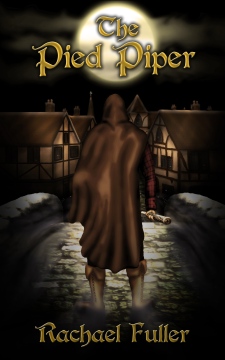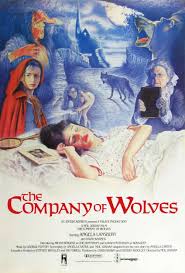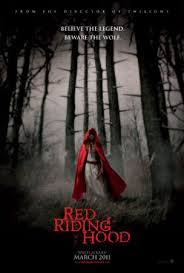As previously mentioned in my posts The Frog Prince never ranked that high in my list of favourite fairy tales, growing up. The Pied Piper however was always one of my favourites. The story is sinister, unsettling and tragic and it certainly does not end happily ever after. I’m not trying to suggest I was a creepy, disturbed child who only enjoyed tales of misery and death; I merely liked the tale because it stood out from the rest.
For me, my favourite fairy tales were split into two categories. You had tales such as Sleeping Beauty, Snow White, The Frog Prince and Cinderella. Although still dark and disturbed tales in their own right due to the Brother’s Grimm, they were still essentially romances with ‘Happily Ever Afters’ tagged onto the end. Then you had tales such as The Pied Piper, Little Red Riding Hood, Hansel and Gretel and Rumplestiltskin which did not follow the traditional romantic route and ended in violence and even tragedy. Mix these two types of stories together in a collection, as the Brothers Grimm did, and you have a truly fantastic anthology of enchanting, romantic, disturbing and brutal stories.
Back to the Pied Piper though, one of the most intriguing facts about this fairy tale is that it is based on an actual event in history. In the story Hamelin town is infested with rats. A stranger comes through the town and offers to rid them of their rats for a small fee and they accept. Playing his pipe, the piper lures the rats out of the town and takes them to a river where they drown. However, the town refuses to pay and the piper leaves promising they will regret that decision. Later that night he returns and, like the rats, lures the town’s children away and takes them to the same river where they drown. More sanitized versions have the piper shut them away in a cave until the townspeople paid up. It is quite a dark and hypnotic tale of revenge.
In the 1300s in Hamel in, Germany, it is recorded that the town “lost” their children. There was recorded to be a stained glass window in the church depicting a “pied piper” taking the children away. How they were really lost has never been verified. Some speculated that the children died, the pied piper being a manifestation of death, leading them away from this world. The inclusion of the rats in the tale naturally led to the argument that the children died of the plague. Some have even suggested the children did not die but merely emigrated or were recruited. Whatever happened to the children, their disappearance was referenced in 1384 in the town chronicles which states:
in, Germany, it is recorded that the town “lost” their children. There was recorded to be a stained glass window in the church depicting a “pied piper” taking the children away. How they were really lost has never been verified. Some speculated that the children died, the pied piper being a manifestation of death, leading them away from this world. The inclusion of the rats in the tale naturally led to the argument that the children died of the plague. Some have even suggested the children did not die but merely emigrated or were recruited. Whatever happened to the children, their disappearance was referenced in 1384 in the town chronicles which states:
“It is 100 years since our children left.”,
The tale itself is therefore given more substance and depth, being based on a true story.
The story of a strange man luring hundreds of rats from a town through music, then returning for the town’s children to punish the adults for not paying what was owed is truly a haunting premise. What makes it more sinister is the peculiar character of the piper. It is never explained who he is, where he came from or exactly how he could lure animals and people by his music. The ambiguous and haunting nature of the tale just made it all the more fascinating to me and that is why I chose The Pied Piper to be the second in my ‘Fairy Tales in Rhyme’ series on kindle. I wanted to capture that mysterious and evocative atmosphere of the story and give it that hypnotic rhythm that only rhyme can achieve. So for those of you who, like myself, find yourself drawn to piper’s tune, please check it out at http://www.amazon.co.uk/Piper-rhyme-Fairytales-Rhyme-ebook/dp/B007GPYMEC/ref=sr_1_2?ie=UTF8&qid=1332498255&sr=8-2
….Walking through the empty streets, lit by soft moonlight,
The cobbles shone a silver blue, the houses fringed with white.
And as he walked he played a tune, an eerie, haunting sound,
A ghostly mist like bony fingers crept along the ground.
The tune it echoed through the streets, it hung upon the air,
It spread through sewers into houses, up and down their stairs.
The tune caressed every corner within old Hamelin town.
Its melody like flowing water, within which you could drown.
When he reached its very edge, the town, in moonlight shone,
Thomas Bard lowered his pipe, but still the tune played on.
Tiny shadows began to move, little dots of black,
Scampered from both house and sewer, though each and every crack.
A thousand paws so lightly tapped a soft and rhythmic beat,
They joined together, moved as one as one, a rippling black sheet.
Thomas Bard began to walk towards the distant woods,
He wrapped his cloak around his chest, pulling up its hood….



 Hansel and Gretal (2009) is a Korean film which takes this tale and turns it into to what can only be described as a twisted, fantastical nightmare. After a car accident a lost and injured young man is aided by a young girl who takes him back to her seemingly perfect family in their perfect house in the woods. But the house holds bizarre and disturbing secrets and he soon realizes that the children are not what they seem and there is literally no way to escape. The film turns this classic tale on its head where the children are the main protagonists with an axe to grind against adults who think they are “bad children”.
Hansel and Gretal (2009) is a Korean film which takes this tale and turns it into to what can only be described as a twisted, fantastical nightmare. After a car accident a lost and injured young man is aided by a young girl who takes him back to her seemingly perfect family in their perfect house in the woods. But the house holds bizarre and disturbing secrets and he soon realizes that the children are not what they seem and there is literally no way to escape. The film turns this classic tale on its head where the children are the main protagonists with an axe to grind against adults who think they are “bad children”. Pan’s Labyrinth starts off with a fairy tale about Princess Moanna (daughter of the King of the underworld) who becomes curious about the world above. Blinded by the sunlight, she loses her memory, becomes ill and dies. The King, lost in grief, believes that her spirit will return to the underworld someday. The film then cuts to post-Civil war Spain with young Ofelia and her pregnant mother travelling out to meet her new stepfather: a cruel and sadistic fascist. She meets an array of unusual mystical creatures including a fairy (which looks like a large stick insect) and a faun. The faun gives her 3 tasks to complete to prove she is the princess Moanna in essence. Her first task is to retrieve a key from a giant frog (which was visually fantastic!), then to retrieve a dagger from a child-eating monster with eyes in his hands who nearly catches her. Her final task is to rescue her baby brother from her stepfather and take him into the labyrinth. This is the most dangerous task of all as her stepfather is now viciously out of control having brutally murdered a number of rebels and even caused the death of her own mother. Once in the labyrinth with her brother Ofelia refuses to harm him (the faun wants blood from his finger to open up the portal to the underworld). Her stepfather catches up to her and shoots her, and is then killed himself coming out of the labyrinth. Ofelia’s blood opens the portal and she is reunited with her family as Princess Moanna. Sacrificing her own blood was in fact the final part of the faun’s test, proving her essence was complete.
Pan’s Labyrinth starts off with a fairy tale about Princess Moanna (daughter of the King of the underworld) who becomes curious about the world above. Blinded by the sunlight, she loses her memory, becomes ill and dies. The King, lost in grief, believes that her spirit will return to the underworld someday. The film then cuts to post-Civil war Spain with young Ofelia and her pregnant mother travelling out to meet her new stepfather: a cruel and sadistic fascist. She meets an array of unusual mystical creatures including a fairy (which looks like a large stick insect) and a faun. The faun gives her 3 tasks to complete to prove she is the princess Moanna in essence. Her first task is to retrieve a key from a giant frog (which was visually fantastic!), then to retrieve a dagger from a child-eating monster with eyes in his hands who nearly catches her. Her final task is to rescue her baby brother from her stepfather and take him into the labyrinth. This is the most dangerous task of all as her stepfather is now viciously out of control having brutally murdered a number of rebels and even caused the death of her own mother. Once in the labyrinth with her brother Ofelia refuses to harm him (the faun wants blood from his finger to open up the portal to the underworld). Her stepfather catches up to her and shoots her, and is then killed himself coming out of the labyrinth. Ofelia’s blood opens the portal and she is reunited with her family as Princess Moanna. Sacrificing her own blood was in fact the final part of the faun’s test, proving her essence was complete.
 My first film from the 80s is The Dark Crystal (1982). I find it hard to find the words to express how fantastic this film truly is and how much I loved it growing up (and still do!). It’s such an incredibly dark story with a wealth of fantastical creatures. Some of them are cute and delightful like the Podlings or even beautiful and graceful like the Gelflings. The Mystics are enchanting with their aged fragility and gentleness. Then of course there’s the Skeksis, grotesque and vulture-like with their henchmen the Garthim: scary and soulless giant beetles.
My first film from the 80s is The Dark Crystal (1982). I find it hard to find the words to express how fantastic this film truly is and how much I loved it growing up (and still do!). It’s such an incredibly dark story with a wealth of fantastical creatures. Some of them are cute and delightful like the Podlings or even beautiful and graceful like the Gelflings. The Mystics are enchanting with their aged fragility and gentleness. Then of course there’s the Skeksis, grotesque and vulture-like with their henchmen the Garthim: scary and soulless giant beetles.
 The Company of Wolves, albeit not everyone’s cup of tea, really is a fantastic imagining of this popular fairy tale. Based on Angela Carter’s novel, it looks at Little Red Riding Hood from a more psychoanalytical approach. More specifically focusing on the sexual awakening of a young girl and the dangers this presents, all expressed through subtle metaphors: Rosaleen’s white (pure) dress hanging up on her bedroom door, the red cloak given to her at the same time as her first date, the mysterious man who captivates her but who is in fact a werewolf, the constant warnings from her Grandmother not to “stray from the path” (the “path” being both literal and figurative). As soon as Rosaleen strays from the path, she is at the mercy of dangerous men, but this just seems inevitable during the film.
The Company of Wolves, albeit not everyone’s cup of tea, really is a fantastic imagining of this popular fairy tale. Based on Angela Carter’s novel, it looks at Little Red Riding Hood from a more psychoanalytical approach. More specifically focusing on the sexual awakening of a young girl and the dangers this presents, all expressed through subtle metaphors: Rosaleen’s white (pure) dress hanging up on her bedroom door, the red cloak given to her at the same time as her first date, the mysterious man who captivates her but who is in fact a werewolf, the constant warnings from her Grandmother not to “stray from the path” (the “path” being both literal and figurative). As soon as Rosaleen strays from the path, she is at the mercy of dangerous men, but this just seems inevitable during the film. Last year another reworking of Little Red Riding Hood came out: Red Riding Hood starring Amanda Seyfried and Gary Oldman. This one did not have as much depth as The Company of Wolves but it certainly had a similar atmosphere. The problem with this film, which I think dragged it down right from the start, was the immediate comparisons to the Twilight franchise. Amanda Seyfried was perfect casting for the lead role and the press releases of her in her deep red cloak against the pure white snow in a gothic forest seemed to hit the nail on the head as far as I was concerned. But then you have the addition of the two lead males/love interests, complete with their emo haircuts and soulful eyes and it goes down the toilet along with the other Twilight-y copycats that have come out over the last few years. Not to mention the slightly dodgy special affects when it came to the wolf. (By the way, what is it with that anyway? Even the latest Twilight film, with their big budget, couldn’t pull off CGI wolves well enough so save people from frowning at the screen and saying…”really?”). But, story and crappy romance aside, the overall look of the film was fantastic. For me the cinematography i.e. set design, lighting and the general ambiance conveyed throughout, personified “dark fairytale” for me and for that alone (along with the brilliant Gary Oldman of course) it should have done well – or at least better than it did!
Last year another reworking of Little Red Riding Hood came out: Red Riding Hood starring Amanda Seyfried and Gary Oldman. This one did not have as much depth as The Company of Wolves but it certainly had a similar atmosphere. The problem with this film, which I think dragged it down right from the start, was the immediate comparisons to the Twilight franchise. Amanda Seyfried was perfect casting for the lead role and the press releases of her in her deep red cloak against the pure white snow in a gothic forest seemed to hit the nail on the head as far as I was concerned. But then you have the addition of the two lead males/love interests, complete with their emo haircuts and soulful eyes and it goes down the toilet along with the other Twilight-y copycats that have come out over the last few years. Not to mention the slightly dodgy special affects when it came to the wolf. (By the way, what is it with that anyway? Even the latest Twilight film, with their big budget, couldn’t pull off CGI wolves well enough so save people from frowning at the screen and saying…”really?”). But, story and crappy romance aside, the overall look of the film was fantastic. For me the cinematography i.e. set design, lighting and the general ambiance conveyed throughout, personified “dark fairytale” for me and for that alone (along with the brilliant Gary Oldman of course) it should have done well – or at least better than it did! 


